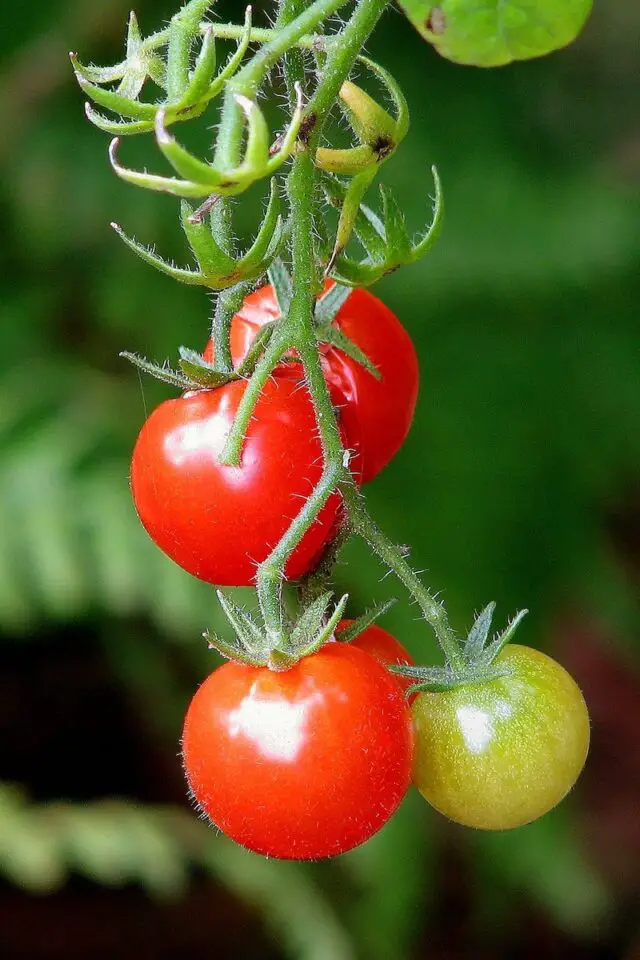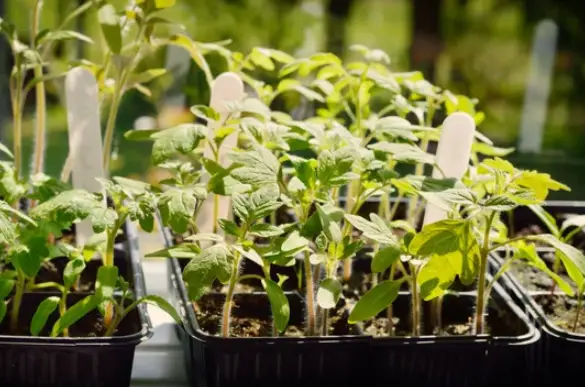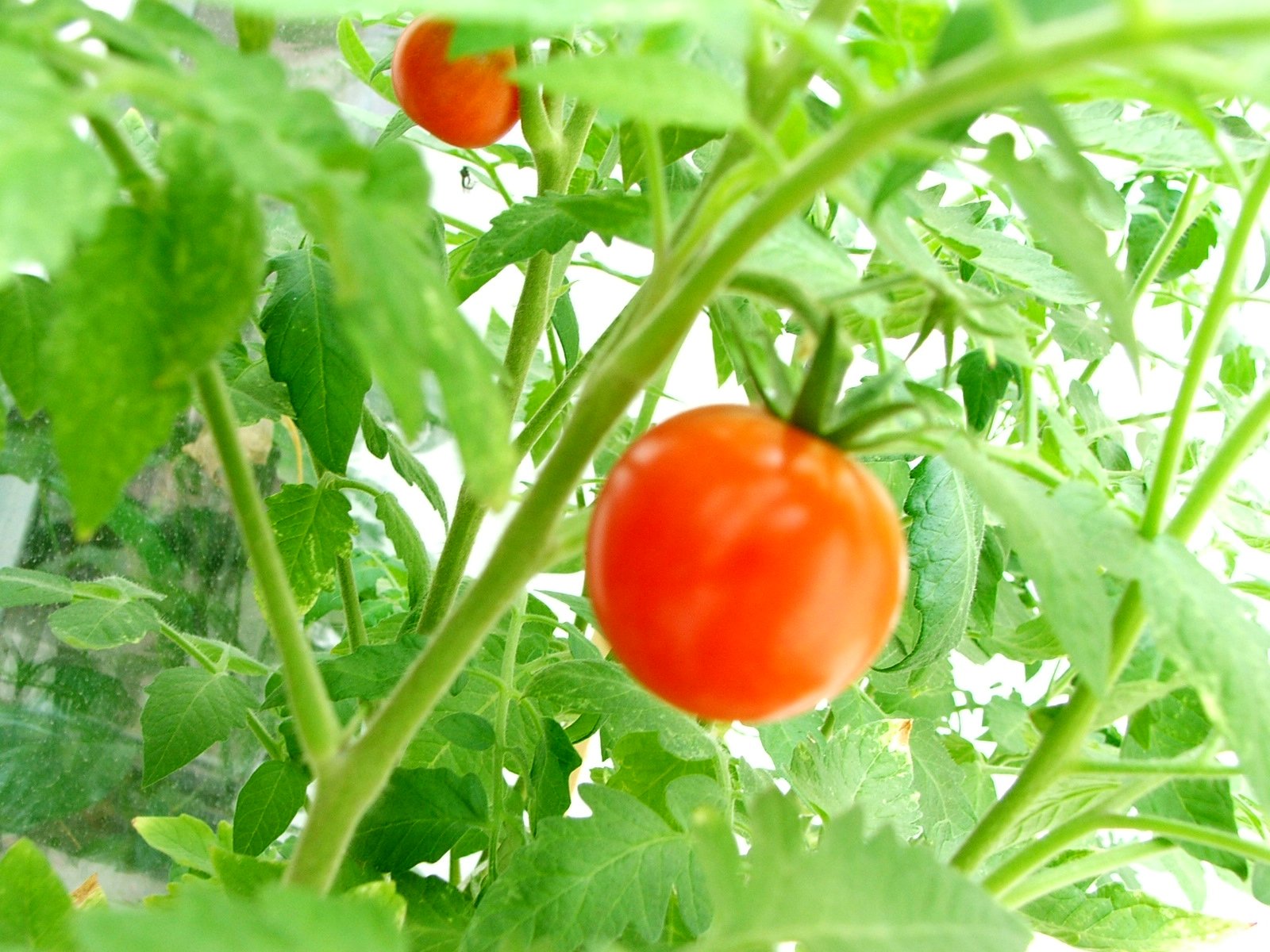Cherry tomatoes are delightful little bursts of flavor, perfect for salads, snacking, and adding color to your garden. But how do you ensure they thrive? One crucial factor is proper plant spacing. Let’s dive into the details and create a comprehensive guide for successful cherry tomato cultivation.
1. Why does plant spacing matter?
Plant spacing directly impacts your tomato plants’ health, yield, and disease resistance. When tomatoes are too close together, they compete for sunlight, air circulation, and nutrients. Conversely, if they’re too far apart, you waste valuable garden space.
2. General Guidelines for Cherry Tomato Spacing
While there’s no one-size-fits-all answer, here’s a rule of thumb: 18–24 inches apart. This spacing strikes a balance between allowing each plant room to grow and ensuring optimal fruit production. However, let’s explore further:
- In Rows: If you’re planting in rows, space your cherry tomato plants approximately 12–18 inches apart within the row. Rows should be at least 32–36 inches apart to allow for proper air circulation.
- Determinate vs. indeterminate: Consider the tomato type. Determinate varieties (which grow to a certain height, flower, and set fruit quickly) can be spaced closer together. For indeterminate varieties (which keep growing and producing throughout the season), leave more room.
3. Container Gardening

Plant Spacing for Cherry Tomatoes
If you’re growing cherry tomatoes in containers, follow these guidelines:
- Container Size: Opt for containers that are at least 18–24 inches wide and deep. Compact varieties can thrive in smaller containers (around 12 inches wide and deep).
- Single Plant per Container: Stick to one cherry tomato plant per container. This ensures adequate space for roots, prevents overcrowding, and allows for proper air circulation.
4. Air Circulation and Disease Prevention
Humidity can lead to rapid disease spread. Proper spacing allows air to flow freely, reducing the risk of fungal infections. Remember:
- Avoid Crowding: Overcrowded plants trap moisture, leading to leaf diseases. Give them room to breathe.
- Sunlight and Air: Ensure sunlight reaches lower leaves by maintaining a spacing of 12–24 inches between plants.
5. Pruning and Maintenance
Regular pruning keeps your cherry tomato plants healthy. Here’s how:
- Prune Every 7–10 Days: Remove suckers and excess growth. Pruning improves air circulation and light penetration.
How do I know if my plants need more space?
Determining if your plants need more space is essential for their health and productivity. Here are some indicators to consider:
- Plant Tags: If you bought plants from a nursery, check the plant tags. They often provide information on the recommended spacing for cherry tomatoes. Follow these guidelines to ensure adequate room for growth.
- Overcrowding Signs:
- Stunted Growth: If your tomato plants appear stunted with limited upward growth, it could be a sign of overcrowding. Lack of space restricts their development.
- Yellowing Leaves: Overcrowded plants may exhibit yellowing leaves due to insufficient sunlight and air circulation.
- Disease Susceptibility: When plants are too close together, moisture gets trapped, increasing the risk of fungal diseases. Keep an eye out for signs of leaf spots or wilting.
- Air Circulation: Proper spacing allows air to flow freely around the plants. If you notice leaves touching or overlapping, consider adjusting the spacing.
- Support Needs: As your cherry tomato plants grow, they’ll require support, such as cages or trellises. If they’re getting tangled or leaning excessively, it’s time to provide more space.
Remember that 18–24 inches apart is a good starting point for cherry tomato spacing, but adjust based on your specific conditions and tomato type.
How much water do cherry tomato plants need?

Cherry tomato plants require adequate watering to thrive and produce juicy, flavorful fruits. Let’s explore the science and art of watering these delightful plants:
- General Guidelines:
- In-ground cherry tomato plants typically need about one inch of water per week. However, this amount can vary based on factors like weather conditions and soil type.
- Check the soil moisture regularly and adjust your watering schedule accordingly. Avoid overwatering, as it can lead to root rot and other issues.
- Sunlight and soil:
- Place your cherry tomato plants in a sunny spot where they receive at least six hours of direct sunlight each day.
- The soil should be kept moist but not soggy. Allow the soil to dry out slightly between watering sessions.
- Young Plants:
- When your tomato plants are young, consider using drip irrigation. It helps avoid strong streams of water that could erode the soil.
- Water the plants deeply to encourage healthy root development.
Conclusion
Cherry tomatoes thrive when given the right space. Whether in rows, containers, or raised beds, remember the golden rule: 18–24 inches apart. Happy gardening! 🍅🌱
References:
- 3Master Tomato: How To Space Cherry Tomato Plants For Optimal Growth
- Average Person Gardening: Cherry Tomato Plant Spacing
- Self Gardener: Don’t Crowd Your Cherry Tomato Plants
20 Frequently Asked Questions About Caring for Cherry Tomato Plants
Do cherry tomato plants come back every year?
Cherry tomato plants are annuals, meaning they will come back each year if cared for properly. Fertilize them and provide adequate water throughout the growing season.
How much water do cherry tomato plants need?
Water your cherry tomato plants generously, aiming for about one inch of water per week. Adjust based on soil moisture and weather conditions.
What’s the ideal sunlight for cherry tomatoes?
Cherry tomatoes thrive in full, direct sun for at least six to eight hours per day.
How should I prune cherry tomato plants?
Regular pruning encourages new growth and prevents diseases. Remove suckers every 7-10 days.
Can cherry tomatoes be grown in containers?
Yes! Choose containers that are at least 18-24 inches wide and deep. Stick to one plant per container.
What’s the best fertilizer for cherry tomatoes?
Opt for a balanced fertilizer with a ratio of about 10-10-10 (nitrogen, phosphorus, and potassium).
How far apart should I space cherry tomato plants?
A good rule of thumb is 18-24 inches apart. Adjust based on tomato type and growing conditions.
Can cherry tomatoes survive frost?
No, frost can be fatal for tomato plants. They won’t reappear after frost damage.
How long do cherry tomato plants live?
In suitable conditions, they can survive up to two years if protected from frost.
What causes yellowing leaves in cherry tomatoes?
Yellowing leaves may result from overcrowding, insufficient sunlight, or disease. Proper spacing helps prevent this.
How do I support bushy cherry tomato plants?
Use stakes or trellises to prevent fruit from touching the ground, especially in crowded conditions.
When should I harvest cherry tomatoes?
Twist them off the stem when they are bright red and firm to the touch.
Can cherry tomatoes be grown indoors?
Yes, but indoor plants produce less fruit than outdoor ones. They can survive indoors for 2-6 years.
What pH does cherry tomato soil need?
Aim for a soil pH of 6.5 or higher for optimal growth.
How often should I fertilize cherry tomato plants?
Apply fertilizer every three to four weeks during the growing season.
What’s the lifespan of healthy tomato cuttings?
With proper care, they can have an indefinite lifespan.
How do I prevent fungal diseases in cherry tomatoes?
Maintain proper spacing for air circulation and avoid overcrowding.
Can cherry tomatoes tolerate cold nights?
They can handle a few cold nights if not exposed to extreme cold. Frost, however, is detrimental.
Do determinate cherry tomatoes produce continuously?
Determinate varieties produce fruit in a concentrated period, while indeterminate ones keep growing and flowering.
What’s the best time to fertilize cherry tomato plants?
Fertilize in the early morning or evening, and water the plants first




